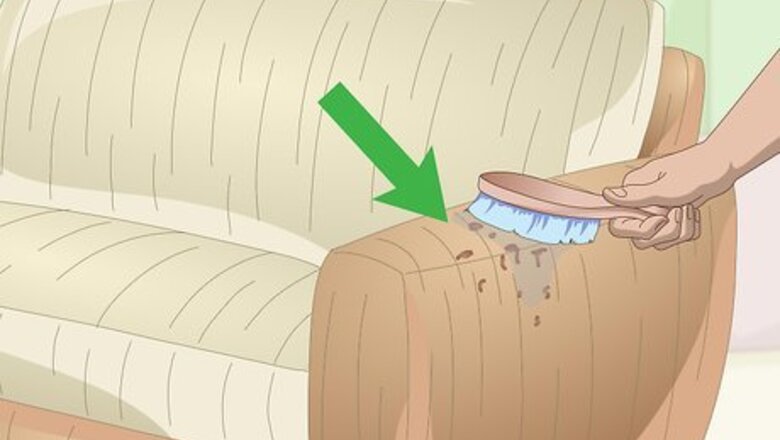
views
Brushing and Vacuuming Your Sofa

Brush the surface of the sofa. Use a soft bristled upholstery brush or baby's hairbrush and go over the entire sofa in small circular motions to loosen up any impacted dirt. Go over especially soiled areas in a back and forth motion until the area is clean. The soft bristles on your brush should not damage the fabric.
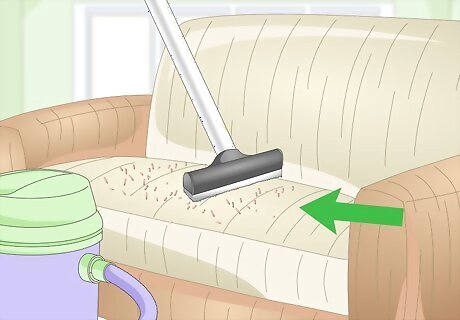
Vacuum the sofa with the upholstery attachment. Set the vacuum to the lowest setting and attach the upholstery brush to it. Use the attachment to lightly go over the surface of your couch and suck up the dirt that you loosened with brushing.
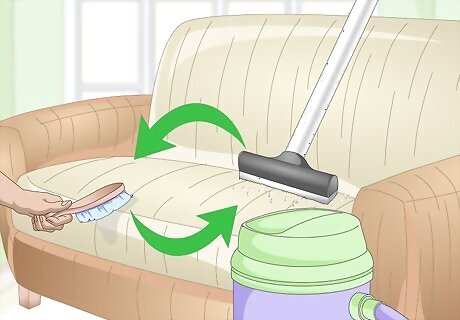
Continue to brush and vacuum your sofa on a weekly basis. Vacuuming regularly prevents dirt from becoming embedded into your sofa's fibers. You can brush your sofa more often, or whenever you notice that there's been a buildup of dirt and dust. The more often that you vacuum and brush your sofa, the less often you'll have to get it professionally cleaned.
Performing a Spot Cleaning
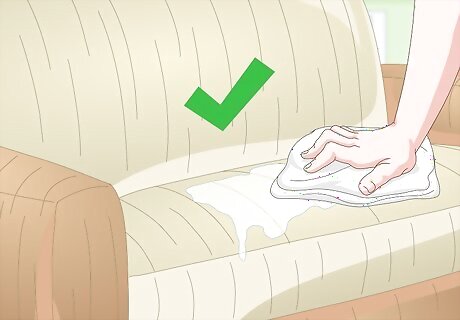
Blot spills immediately with a cotton towel. Blotting stains as soon as they occur, will prevent the stain from sinking deeper into the fabric of your sofa. Do not rub the stain. Rubbing the stain will cause the stain to spread. If you let the stain dry, it will be much harder to remove.
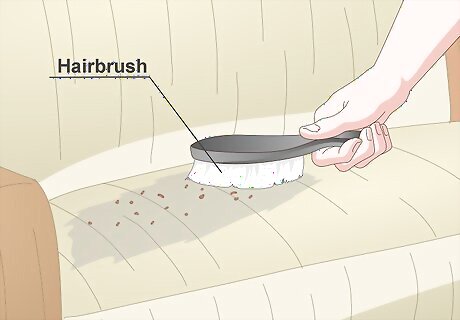
Brush the fabric with a hairbrush. Use a soft brush to comb towards the nap of the fabric. This should help lift up any of the material that is on the outer surface of the couch.
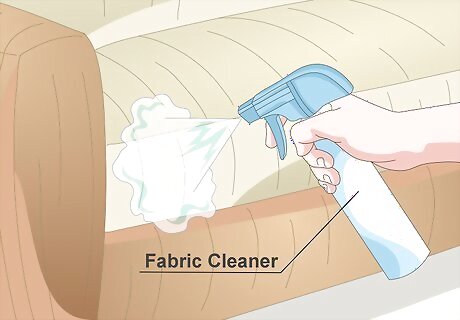
Put fabric cleaner on the stain. Use a small amount of solvent-based fabric cleaner. Typically these come as a foam or a spray and don't contain water, which can cause chenille to shrink. Do not saturate your chenille sofa, you just want to cover the area that has the stain. You can purchase solvent based upholstery cleaners at major department stores or online. Check the label to see if the cleaner is solvent based. Look for upholstery cleaner that is made specifically for chenille fabrics.

Dab the stain softly with a clean rag. Put a dab of fabric cleaner on the stain. Do not rub. Continue to dab the stain with a clean rag until it's dry and you've removed all the fabric cleaner from the sofa. Repeat the steps until the stain is removed from your couch.
Maintaining Your Chenille Sofa

Turn and rotate your cushions. Turning and rotating your cushions will prevent uneven wear and potential sun damage from occurring. Do this one time a week to extend the longevity of your sofa.
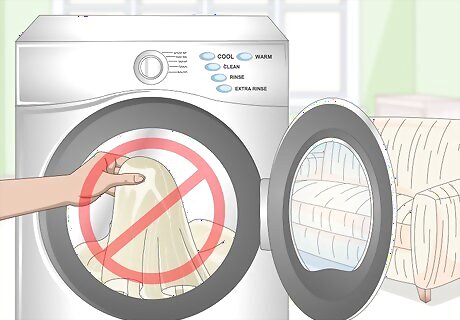
Never machine wash your chenille upholstery. If you have removable chenille upholstery, you should never machine wash it. Water can cause shrinkage to chenille, which can prevent you from fitting the upholstery over the pillows once you're done cleaning it.
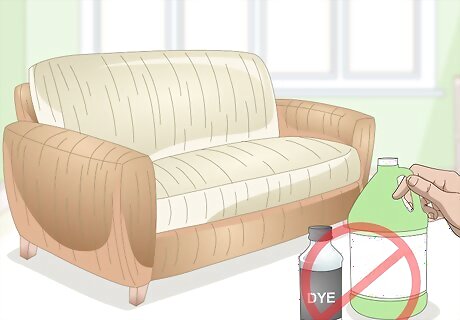
Keep dyes and corrosives away from your sofa. The dye in newspapers, inks, nail polish, or paint could permanently and irreparably stain the surface of your sofa. Keep these products away from the sofa when you are using them.
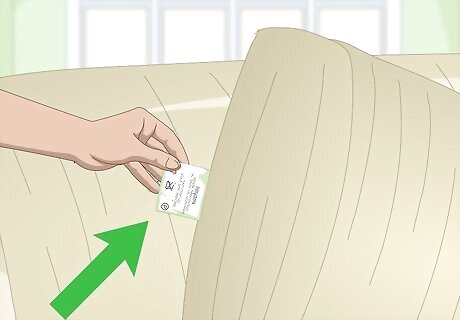
Read the tag on your couch's cushions. If there are tags on your chenille furniture, it will give you a better idea of how to clean them. Since chenille is prone to shrinkage, the tag will most likely read S, which means that you should only use a dry solvent, or an X, which means that it should only be professionally cleaned or vacuumed. Do not try to spot clean your sofa yourself if there is an X tag on it.
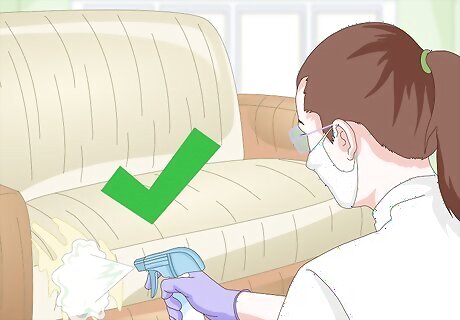
See a professional for deep cleaning. Because chenille fabric is so sensitive to different products and cleaners, it's important that you never try to deep clean the couch yourself. While you can perform spot cleaning and regular maintenance, any deep cleaning issues should be handled by a professional.

















Comments
0 comment